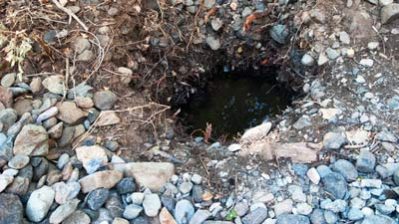Before you dig, shouldn’t you be asking where to dig first?
Sampling is one of the first steps in prospecting for gold and is important to help eliminate the big pain of a bad day mining.
If you still have questions about where gold samples need to be taken, then maybe you shouldn’t be digging yet. After all; there’s far more places without gold, where you shouldn’t be digging, than gold bearing places where you should…
The sequence of steps in gold prospecting is important – let’s take a look at what that means to you.
Unfortunately a common gold mining philosophy is;
“Dig first, ask questions later.”
Have you ever started a project, only to realize you did things out of order?
You know the kind of situation; as work progresses, the worse things get.
When you build a shed, you have to first pour the foundation before you can build the frame and roof.
You wouldn’t start from the roof and build down. You start at the base and work up. The order in which you do things is critical. Most people would call this common sense.
One step follows the other.
The same thing is true in gold prospecting.
Just like any other project, you need a good process to make it work. You don’t’ start by spending $200,000 on an earth mover before knowing if there is gold in the area.
This is one of my biggest problems with some miners on the Discovery Channel TV Show “Gold Rush”
They jump to expensive machinery instead of starting with the basics. This is great for television ratings, but makes for lousy gold prospecting. If they would start at the beginning, they would save a ton of money and get to the gold faster.
Things you need to consider are whether there’s been gold found in the area and the kind of topology and terrain that you’re looking at. Knowing how those tie together gives you a good starting point for sampling where the gold is.
Good Prospecting,
Prospector Jess

